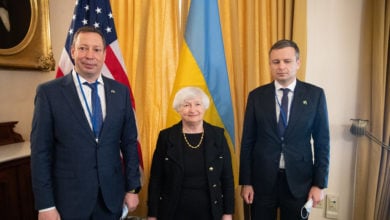Here Are the Goals of the COP26 Climate Change Meetings—and Where the World Stands in Accomplishing Them

Next week, thousands of ministers and diplomats from across the world will descend on an event campus in Glasgow, Scotland for the most important climate conference in recent years—and perhaps the most significant international meeting of our lifetimes.
From Oct. 31 to Nov. 12, they’ll be bringing forward countries’ first updated plans to cut emissions since the Paris accords six years ago, and finalizing the so-called “Paris Rulebook” that will govern how the agreement’s ambitious emissions reductions will actually be implemented around the world. The conference’s organizers have laid out several goals for the event, among them eliminating the world’s coal power plants, replacing gasoline vehicles with electric models and reaching an agreement for wealthy nations to provide $100 billion annually in financing to support the climate transition in the developing world.
[time-brightcove not-tgx=”true”]
It’s hard to overstate the urgency behind those negotiations. Delayed from 2020 due to the global pandemic, COP26 follows a year in which, from massive wildfires in Siberia and unprecedented flooding in Germany and Belgium, to famine in Madagascar and record-shattering heat in the American West, it’s become abundantly clear that climate change has contributed to increasingly frequent and severe weather events. It’s also set against the backdrop of the most recent scientific report from the U.N.’s Intergovernmental Panel on Climate Change (IPCC), published in August of this year, which laid out the current state of the worlds’ climate and the consequences of inaction in its starkest-ever terms.
Some progress has been made in recent years, but the world is still far off-track to achieve the emissions reductions goals of the Paris Accords, with countries’ current commitments still likely to produce a devastating level of global heating in coming decades—if nations follow through on them at all. But as countries hammer out their differences in Glasgow’s meeting halls, it’s anyone’s guess if they will reach an agreement to zero out the world’s emissions in coming decades. A recent European energy crisis, COVID-19 logistical headaches and crucial absences by some world leaders have put the success of negotiations in doubt, while some observers worry that the world’s rich nations will continue to hold back crucial financial support for less advanced economies, which have contributed far less to creating the current climate crisis.
From outside the negotiating room, it can be difficult to cut through the jargon and see what’s actually at stake in these talks. The following list has been compiled by our reporters. It shows where the world stands with regard to the key goals of COP26. What we can achieve.
Finalize the Paris rulesbook
The Paris Agreement’s Article 6 is the last remaining part that negotiations want to complete. It would create a global carbon market—in which a country or business could pay for projects that reduce emissions elsewhere and then count those reductions in their own targets (often known as “offsetting”). It is hoped that the carbon market will drive money to places where it can cut emissions most efficiently and make it less expensive to meet global climate targets. Without strong rules, though, the market system might allow emissions to be counted twice as often or permit countries to buy credits to offset emissions from projects long past or those that occurred anyway. Many activists say that if countries like Brazil, Saudi Arabia and Australia succeed in pushing through lax rules, it would slow climate action and reward polluters.—Ciara Nugent
Investing in renewable energy is a major priority
The cost of renewable energy has fallen significantly in recent times, so in many places around the world it is much cheaper to build new solar or wind power infrastructure than for natural gas and coal. But the world isn’t building those new power plants nearly fast enough to bring down emissions in line with the targets of the Paris Accords, especially in the developing world, where borrowing costs necessary to build such projects can be many times higher than in wealthy nations.
China has the highest level of clean energy investment in the world, ahead of the U.S.A, Germany, Japan, and the U.K. According to the International Energy Agency (IEA), renewable energy investment needs to triple over the next decade in order to zero out emissions by 2050, with 70% of those funds to be spent in the developing world.—Alejandro de la Garza
Increase collaboration between the private and public sectors
Though the center of COP26 is negotiations between countries, governments know policy alone can’t solve climate change. Without the support of businesses and civil society, it is difficult to wean the world economy from fossil fuels. COP organizers want to encourage more climate action from the public—through public-facing events— and crucially from the private sector. There are promising signs: a fifth of the world’s 2,000 largest public companies have already committed to net-zero targets, though campaigners warn that many lack firm plans to reach those targets. Business leaders will be pushing for governments to introduce new policies that help them do more —such as subsidies and investments for clean technologies, or carbon pricing systems that reward those who cut emissions fastest.—Ciara Nugent
Adopt more electric vehicles
Electric vehicles (EVs) are becoming more common around the world, but they aren’t taking over from their polluting, gasoline-powered predecessors fast enough.
The world’s roadways had about 10 million EVs as of the end of 2020, and the IEA predicts the next ten years will see a massive expansion to 145 million zero-emissions vehicles (7% of the world’s market) by 2030, thanks in part to falling costs and improved charging infrastructure. But that number will have to be much higher—230 million vehicles, or 12% of all the world’s cars and trucks in 2030—to meet the goals of the Paris Agreement.—Alejandro de la Garza
Stop deforestation.
Forests are disappearing around the world, though they’re not being logged as fast as they were a few decades ago. Global forest loss was 7.8 million hectares between 1990 and2000, and 4.7 million per annum from 2010 to 2020. But, cumulative losses since 1990 add up to an area as large as Libya. 178,000,000 hectares is still the largest source of human-caused greenhouse gases emissions, after the burning of fossil fuels.
The COP26 organizers are pushing to reverse that deforestation trend by 2030, a plan which could include pooling government funding to protect vital forests like the Congo Basin.—Alejandro de la Garza
Take a vow to end coal
According to the International Energy Agency, coal is the most polluting energy source, emitting 30% of all global CO2 emissions. Yet it still generates 38% of the world’s electricity. COP26 organizers have set a goal to “consign coal to history,” and U.N. secretary general António Guterres is urging rich nations to commit to phase out coal power by 2030 and developing nations by 2040, saying that doing so would be “the single most important step to get in line with the 1.5-degree goal of the Paris Agreement.” Moving away from coal may prove harder for some countries than others.—Aryn Baker
Plan for greater resilience
Even if nations can somehow agree on greenhouse gas emission reduction targets in line with meeting the goal of limiting global warming to 1.5°C by the end of the century, the droughts, heatwaves and extreme weather we have witnessed over the past year will remain part of the new normal. They will get worse if there is no agreement. Cities will need to be prepared for future climatic extremes. Yet nearly half the world’s major cities lack plans to keep their populations safe from climate threats. According to environmental-impact monitoring charity CDP, only 88 cities out of 850 made it onto the organization’s 2020 A List for environmental action and climate change resilience. —Aryn Baker
Climate finance scaling up
A cornerstone of 2015 Paris Agreement was the provision of assistance to the most affected by climate change. This included countries often that have not done much to lower their current carbon emissions. The plan, first developed at the 2009 COP in Copenhagen, was ambitious—to provide $100 billion a year by 2020 from public and private sources—but also vague.

The OECD data shows that climate finance reached only $80 Billion in 2019, and an Oxfam recent report looked at the pledged levels and found that even if the target of $100 billion is met by 2025, it’s unlikely that this amount will ever be achieved. It might be even worse than that: there are disputes about how much money has actually been pledged and a report last year commissioned by U.N. Secretary General António Guterres found that donors were over-reporting climate-funding by $3-$4 billion each. Although many countries have made climate finance pledges ahead of COP26 (including the U.S.), there are still large gaps. The gap in climate financing and lack of it has led to a loss of trust among developing countries. This could affect the ability of COP26 to achieve agreements. —Jennifer Duggan





